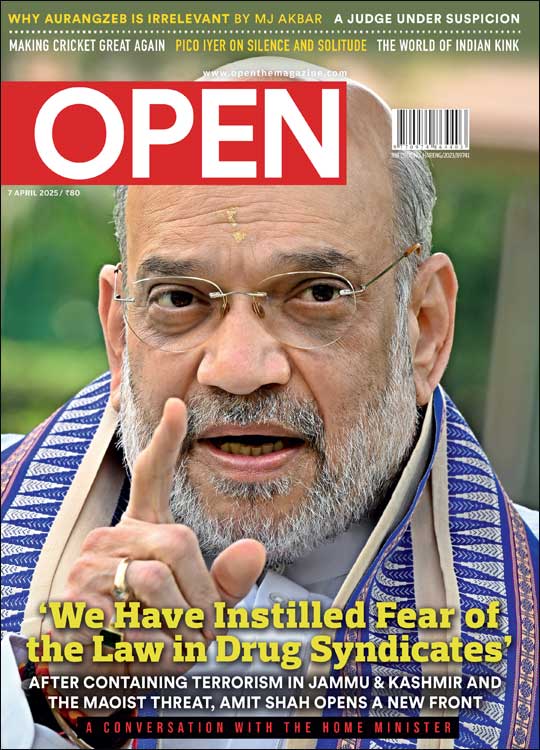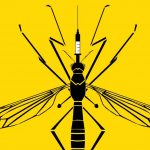The Secret Lives of Indian Street Dogs
New studies show they grow smarter about humans as they age and some are even monogamous
 Madhavankutty Pillai
Madhavankutty Pillai
 Madhavankutty Pillai
Madhavankutty Pillai
 |
06 Sep, 2017
|
06 Sep, 2017
/wp-content/uploads/2017/09/Dogs_0.jpg)
AS ONE OF the handful of researchers in India specialising in the street dog, or more specifically free-ranging dogs, Anindita Bhadra, through a laboratory that she set up at Department of Biological Sciences, Indian Institute of Science Education and Research (IISER) in Kolkata, studies their behaviour. In July, she published a paper in the journal PLOS One titled ‘Free-ranging dogs show age related plasticity in their ability to follow human pointing’ and for the study, her team had gone around their campus to find solitary dogs of different age groups. Altogether 83 adults, 58 juveniles who had just started foraging and 68 pups ended up being tested. For the experiment, they had plastic bowls covered with cardboard; some containing pieces of chicken, the others rubbed with chicken so that they smelt the same. The experimenter would place two bowls before a dog, one with the meat and the other without, and then point with the finger to one of them. Whether the dog got the chicken or not, the same test was repeated.
“We did three trials per dog. For the first round, we were trying to look at whether they followed pointing and showed gaze alteration,” says Bhadra. Gaze alteration is an important element in the human-dog relationship and occurs when they are uncertain. “If they are not sure which option to choose and are looking at the human, it is assumed that they are asking for help in decision- making. Pets do this all the time. But this is a random dog on the street. First of all, we wanted to check if the dogs would look at humans they didn’t know. We saw that they did. Of course, we don’t know if they are asking for help per se but [they] were definitely trying to make eye contact.”
The team did two more trials after that. “The idea was, suppose I point and the dog goes and finds food. Then I would say that after following [the] pointing it has got a positive reward. But if it does not find food, then it is negative, right? We were saying that if a dog finds food then will it rely more [on the human]? If I point towards something and the dog follows it and finds a reward, is the dog more likely to follow my pointing in the next trial?” she says. This is called testing for positive or negative reinforcement and the results were somewhat unexpected. Pups mostly followed the pointing whether they received a reward or not. Juveniles typically didn’t follow the pointing even with positive reinforcement. “But the adults actually judged the humans based on the previous trials. For the adults, the effect of reinforcement was very strong. If they found a reward, they went again; if they didn’t find a reward, they tended not to trust the human,” says Bhadra.
Why was this surprising? Because such experiments had been done on pets and wolves from whom dogs have descended as a species. And with them the results, whether positive or negative, were constant across all ages. Among street dogs, however, different age groups seemed to have a different relationship with human beings—as they got older, they got smarter at knowing whether human beings were reliable or not.
Studies like these are increasingly telling us much more about Indian street dogs. Some years back, Bhadra and her team tried to find out, using academic rigour, what exactly do street dogs do with their time. It led to a paper, ‘A dog’s day with humans: time activity budget of free-ranging dogs in India’, being published in Current Science in 2014. In three locations across the country—Kolkata, Bangalore and Kalyani in West Bengal—they observed free-ranging dogs in the early morning, late afternoon and early evening, when they are typically around humans. Data was collected for three years and then sorted ‘according to behaviours, and then the behaviours were sorted into various categories like inactive, maintenance, vocalisations, interactions, individual behaviours and others.’ What they found was that the dogs were inactive and at rest most of the time. Doing nothing seemed to be their biggest preoccupation, but more importantly, the researchers didn’t observe much aggression, which might mean that the fear that street dogs arouse in humans is exaggerated. “After the paper, through student projects, we have continuously been repeating such kind of sampling and we see that the result is confirmed. Mostly, half the day they are sleeping,” says Bhadra.
Another study of hers showed that dogs defend territories as groups and often tend to forage alone, but when juveniles are present in the population, larger foraging units are seen, and, in the mating season, male-female pairs often forage together. They therefore adapt social behaviour according to circumstances. She says one of her students is doing a very interesting study, unpublished yet, in which he tried to see what happenswhen a lumpsum of food is given to a group of street dogs. It was thought they would fight. “But they don’t fight. They almost seem to wait for their turns to come and feed one by one,” says Bhadra.
Another recently published paper showed adults having a strong preference for food which was laced with the smell of meat, but pups and juveniles that have only started to forage didn’t have the ability to distinguish it. They learnt to distingush later by foraging with adults. “Some kind of teaching may be involved, whether it is active or not we don’t know. It might be passive transmission of a habit on what to eat first. We had even tried to fool them with pellets of bread soaked in chicken broth. They could distinguish between 100 per cent chicken broth and 50 per cent diluted with water,” adds Bhadra.
While conventional thinking believes only female dogs take care of the pups, a study has observed paternal care among street dogs
FOR OVER TWO decades now Sunil Pal, a school teacher in the town of Katwa in West Bengal, has been researching street dogs in the same manner—he takes his camera and binoculars, gets on his bicycle and ventures out to observe them. Pal has a PhD but is almost entirely self-taught because even though he had been deeply interested in the behaviour of free-ranging dogs since his college days in the 1980s, he found that there was no avenue to pursue such research in India and could not even find a guide. Pal started doing research and publishing on his own, and became a member of the International Society for Applied Ethology, from where he received the guidance to complete his doctorate.
One of his interesting studies was about fatherhood in street dogs. Titled ‘Parental care in free-ranging dogs, Canis familiaris’, the paper was published in Applied Animal Behaviour Science in 2005. The conventional thinking had been that only mothers take care of puppies, but Pal observed even paternal care. The paper noted: ‘The four males [male parents] were in contact with the litters as ‘guard’ dogs for the first 6–8 weeks of litters’ life. In absence of the mothers, they were observed to prevent the approach of strangers by vocalizations or even by physical attacks. Moreover, one male fed the litter by regurgitation showing the existence of paternal care in free-roaming domestic dogs.’
“Before me, most of the studies were done on pet dogs. Normal behaviour is only found if the animal is studied in nature. Pet dogs are trained, so normal behaviour cannot be found,” says Pal. He has also written a paper on the mating strategies of street dogs and observed six different types, among them there was a surprising fact. Dogs are usually polygamous or polyandrous. “In some groups, a few dogs were monogamous,” he says.
His studies have also highlighted the extraordinary danger of being a street dog in India; most of them are certain to die as pups. One paper noted that almost 67 per cent died within four months of being born andthat 82 per cent did not survive a whole year. “There are so many causes for early pup mortality. I studied the dogs in a town, so vehicles were one of the causes. Malnutrition, weather and several diseases were also responsible,” Pal says.
Pal is now on a study about the behaviour of street dogs in relation to the sounds they make in different situations. “It would be better if I had any sound tracking machine, like what are available in foreign countries. But I have no financial help to buy these machines,” he says.
While Indian free-ranging dogs—in the cities especially—are an admixture to some extent of different breeds, they have a substantial genetic component of an original indigenous true breed. The lineage of this breed, called Indian Native Dog or INDog, can be traced to the beginning of when dogs were domesticated.
According to research, street dogs in India sleep for almost half the day and don’t show as much aggression as is commonly believed
In order to unravel the mystery of domestic dog origins, a study by Cornell University’s Department of Biological Statistics and Computational Biology looked at the genetic makeup of 4,676 purebred dogs from 161 breeds and 549 village dogs from 38 countries. They found domestication’s roots in Central Asia, which then, as the paper published in 2015 in Proceedings of the National Academy of Sciences noted, ‘spread to nearby Asian regions, including Afghanistan, India, and Vietnam.’
Rajashree Khalap, a wildlife conservationist from Mumbai, was a part of that study. She says, ‘I collaborated in the sample collection in India. The rural sites I chose were Adivasi villages in a remote part of Odisha. We also sampled dogs in Mumbai and other cities. Pariah dogs in remote rural areas [including in tribal villages of Odisha state] were found to be indigenous, while urban free-ranging dogs from metro cities showed European ancestry components.’ As the paper says: ‘Similar patterns in Papua New Guinea (Port Moresby), Nepal (Kathmandu), and India (Mumbai) suggest that foreign dogs are more likely to be brought to (or survive in) urban areas than in more remote regions.’
Khalap helms the INDog Project, an awareness and documentation effort, and is particular about the nomenclature used. ‘By INDog, we mean a very specific type of village dog, with erect ears, pointed muzzle, wedge-shaped head, curved tail, short coat, medium height and build. The mode of life, whether a farm dog, livestock guarding dog, hunting companion, or ownerless scavenger, is secondary and does not define the dog. Most street dogs in the cities of the plains are descended from INDogs, and many street dogs may still be unmixed indigenous dogs, but urban populations include many European breed dogs as well, so it is absolutely incorrect to call these street dogs ‘pariah dogs’ or ‘INDogs’. The first step in a public awareness programme is defining all the terms clearly and unambiguously,’ she says. The most striking aspect of INDogs that she finds is the consistency of the ‘pariah type’ or ‘primitive type’ across villages in the tropical belt in different countries and continents. ‘You see village dogs with the same basic build and appearance across Asia and Africa. I’ve seen the type myself in East Africa, Thailand, Cambodia, and Bali, and in the dingoes in Australia,’ she says.
Her own pet Kiba, whom she adopted from a shopkeeper in a village in Raigad, is an INDog and displays the trait of independence that aboriginal breeds have. ‘He was a bit too intelligent and alert if anything, and really kept me on my toes. He knew the things he wasn’t supposed to chew, and would watch me and grab them when I wasn’t looking, even if I looked away for one second. At the same time he was very obedient when I was looking at him, because I started basic obedience training with him when he was just seven weeks old. Kiba had never had any negative experiences with any human. He was born in a shop, and his mother had been cared for by the shopkeeper; I adopted him from there before he had grown big enough to even walk out of the premises. His mother was a very friendly trusting dog too. Yet Kiba had inherited an instinctive distrust of any form of restraint. I had to work hard to get him to accept his first collar at the age of two months. He would never go under chairs or other furniture to retrieve his toys; he seemed to feel he might get trapped. With time this aspect of his character has changed quite a lot, but he is still very wary of situations where he feels threatened or trapped.’
According to some estimates, India might have as many as 30 million free-ranging dogs; one for every 40 Indians. Ownerless dogs polarise us. On one side are those who are afraid of them and the danger of rabies that they present. Against them are dog lovers equally extreme in their desire to see them protected.
In February this year, at a residential complex in Nerul, Navi Mumbai, a housing society threatened to socially boycott members who were feeding stray dogs. The Thane Society for Prevention of Cruelty to Animals (SPCA) weighed in with a notice to the society management telling it that the Supreme Court itself had allowed such feeding. Such arguments do little to make anyone reverse their position. In January this year, while hearing a case related to killing of street dogs, the Supreme Court observed that they have a right to life but also said culling is permissible if done in balance. But what balance is possible in the absence of objective facts separated from emotion?
One of the rare success stories have been in the Nilgiris in south India, where the street dog population was stabilised and rabies eradicated. This was thanks to an organisation, Worldwide Veterinary Service India (WVS), situated 5 km from Ooty. There are about 10 villages around the Mudumalai Wildlife Sanctuary, and Nigel Otter, chairman of WVS, remembers that in the year 2000 there used to be numerous rabies cases in the area. “Every year we used to euthanise about 20 to 40 dogs, cows and other animals with rabies. Humans died too. So we started going house to house and vaccinating dogs. First year we didn’t get results, second year onwards we saw cases coming down,” says Otter. Since 2005, there have been no reports of rabies.
“If a dog gets rabies, it takes 10 days to die. In those 10 days it follows a half or one km radius to bite and pass on the virus. The bitten animals can get rabies up to six months later. It is a continuous cycle. Only vaccination will help. The only state that has done some good for rabies is Sikkim. They deputed the whole government machinery— human doctors, human nurses, veterinarians, revenue department officials, etcetera—to go, canvas among people and get the dogs vaccinated,” he says. WVS has now started another project, known as Mission Rabies, to free Goa from the disease.
If neutering and vaccination go hand in hand, the number of street dogs come down and they also prevent other dogs from entering the territory, thus stabilising the population. It is a simple enough strategy but fails in most municipalities because they don’t do sterilisation and vaccination with the requisite rigour. “If you sterilise only small numbers, the remaining dogs breed and the population comes back to square one. You have to complete 70 per cent of the population. That is very important,” explains Otter.
Policymakers don’t even know that there is research happening on this front and so their response is arbitrary and inefficient. Bhadra of IISER says, “Nobody has tried to talk to me when they are forming policies. I hope with ethological data, we will eventually shape more robust dog population management because that is something we don’t really have. Dogs also often migrate, occupy new territory; groups become larger, then they split. Nobody takes these things into account.”
Dogs meanwhile get smarter about adapting to people. Bhadra’s paper on age-related plasticity showed that adults dogs learnt to trust humans depending on their experience, but juveniles did not. There is the question of why that should be so. Bhadra has a hypothesis that it could be an adaptive trait related to the human propensity to both nurture and harm street dogs.
“Juveniles not trusting humans would give them a survival advantage [because humans harm them]. On the other hands, humans are also a resource. If, after a while, they learn that humans who feed dogs are more likely to be good, then it would give an additional survival advantage [to trust them] in an environment where they are mostly scavengers,” says Bhadra. Almost akin to wise human behaviour— wait and see if someone merits your trust before giving it.

/wp-content/uploads/2025/03/Cover_Amit-Shah.jpg)













More Columns
A Freebie With Limitations Madhavankutty Pillai
Calling Japan Kaveree Bamzai
Knives Out in the White House Kaveree Bamzai